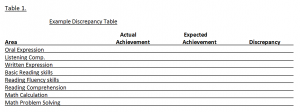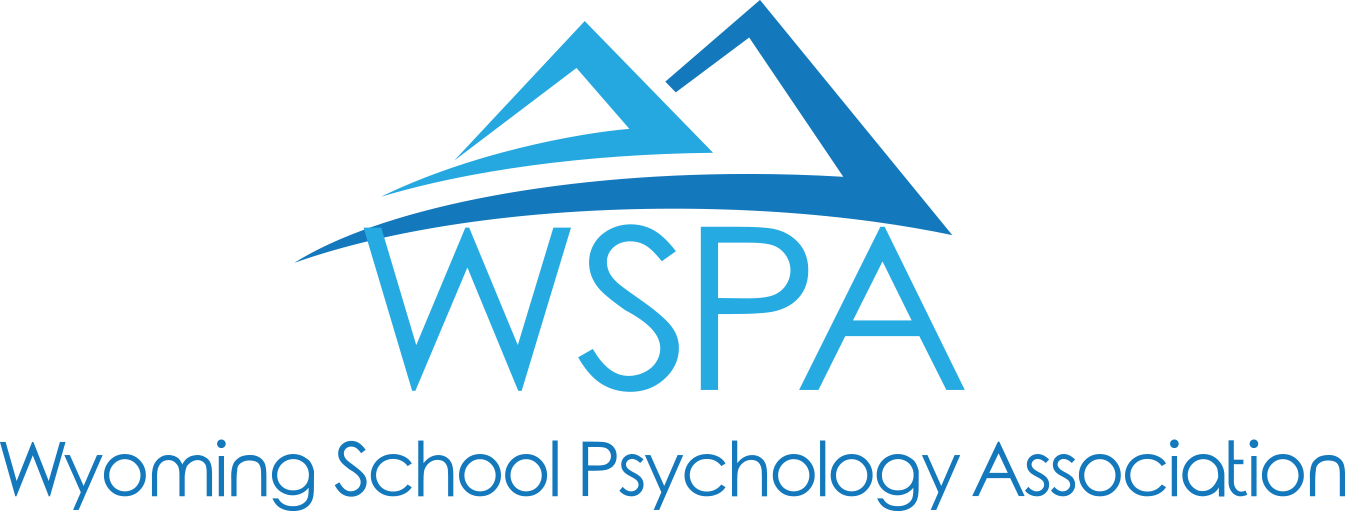Password for access is antelope
***Post written by Eldon Clifford, Past President for WSPA***
Discrepancy Table in SLD Reevaluations: Good idea or Crapola
I am old enough to remember, prior to the reauthorization of IDEA 2004 and Wyoming Department of Education’s adoption of Final Chapter 7: Services for Children with Disabilities (2008), when the use of a Severe Discrepancy Model (SDM) for Specific Learning Disability (SLD) identification was king (the limitations of SDM are for another time). Early in my career, most school districts in Wyoming used SDM with the arbitrary -22 standard score (ss) points (between expected and actual achievement) to identify students with a specific learning disability (Clifford, 2008). In addition, most districts used an additional arbitrary -15ss (between expected and actual achievement) when students were triennially reevaluated for continued eligibility under an SLD category (Clifford, 2008).
Recently, it was suggested I should include a discrepancy table (Table 1) when completing reevaluations. When I thought about this request, I conceptualized this idea was fraught with potential legal, ethical, and psychometric concerns. These are a couple of the concerns I identified:
1. Wyoming Department of Education (WDE) and the United States Office of Special Education Programs (OSEP) does not require or even advocate for the use of any achievement-ability discrepancy in order for the team to determine a student continues to have a SLD (WDE, 2009). Including a discrepancy table could suggest, during a possible due process hearing, the school is basing a student’s continued eligibility on ability-achievement discrepancy which is counter to IDEA regulations and WDE policy (WDE, 2009). Using the table could put the district in a potentially precarious legal position.
2. Comparing discrepancies between evaluation cycles is an inaccurate and inappropriate measure of growth. While some research suggests IQ stabilizes at approximately 5 years-of-age, individual fluctuations may be significant (Sattler, 2008). In addition, intelligence/cognitive assessments are not 100% reliable (i.e… standard error of measurement/ confidence intervals) (Sattler, 2008).
a. As a potential example of why this is inappropriate, say the first time a child is given the WISC-V, the child obtains a Full-Scale IQ score of 90 and an “expected achievement” of 94ss (using Wyoming’s Regression Table@ 0.65). During the child’s triennial evaluation, the child obtains a Full-Scale IQ score of 95. The child’s “expected achievement” score is 97ss. The child is also administrated the WJ-IV Tests of Achievement. During his/her initial administrations she/he earns a 70ss on the Basic Reading Skills cluster. Three years later she/he earns an 80ss on the Basic Reading Skills Cluster. Using this model does it show the child made 7ss of growth or did we just move the goal posts?
IQ Score 1 WJ-IV 1 Expected Achievement “Discrepancy”
90 70 94 -24
IQ Score 2 WJ-IV 2 Expected Achievement “Discrepancy”
95 80 97 -17

In conclusion, the use of a discrepancy table in SLD re-identification does not appear to have any type of psychometric or legal support. In addition, as evidenced above, it can be an inaccurate picture of a student’s growth. Finally, it does not appear to be inline with what is considered best practice for SLD identification (NASP, 2011).
I would ask, if anyone can provide researched based support or support from a professional organization (APA, NASP, etc..) for its use, please respond to this blog. I look forward to hearing your thoughts.
Sattler, J. M. (2008). Assessment of children: cognitive foundations (5th ed). La Mesa, California: Jerome Sattler, Publishing,
Wyoming Department of Education, Special Programs Unit (2009). Reference Guide: Reevaluations in Special Education. Cheyenne, WY: Wyoming Department of Education.
Clifford, Eldon (2008). Visual-Spatial procession and mathematics achievement: The predictive ability of the visual-spatial measures of the Stanford-Binet Intelligence Scales, Fifth Edition and the Weschler Intelligence Scale for Children-Fourth Edition. The University of South Dakota, Vermilion, SD.
National Association of School Psychologists (2011). Position Statement: Identification of students with specific learning disabilities. Bethesda, MD: National Association of School Psychologists.

Thank you for bringing this information to our attention. I too believe the current positions on the SLD criteria are both outdated and irrational. The changes to the updated 2012 DSM-5 removed the requirement for an IQ discrepancy. An IQ score would still be useful in an evaluation to rule out a cognitive disability or to help identify strengths and weaknesses when you plan for services and interventions, To most people it would make sense that a person with a low average to below average IQ would need more services than a person with an average or above average IQ. The current discrepancy model works against the students with an IQ score in the 70’s-mid 80’s. They would have a more difficult time learning in school and meeting the discrepancy model criteria. After looking at your blog, I googled the changes to the DSM-5 SLD criteria and a link to the International Dyslexia Association site showed up in the search. Below is a cut out of the DMS-5 changes.
Q. What changes were made to SLD in DSM-5?
A. The DSM-5 diagnostic criteria for SLD reflect two major changes, each of which necessitated other changes: 1) one overarching category of SLD with ‘specifiers’ to characterize the specific manifestations of learning difficulties at the time of assessment in three major academic domains, namely reading, writing, mathematics (e.g., SLD With impairment in reading: and 2) elimination of the IQ-achievement discrepancy requirement and its replacement with four criteria (A – D), all of which must be met.
Criterion A refers to the key characteristics of SLD (at least one of six symptoms of learning difficulties that have persisted for at least 6 months despite the provision of extra help or targeted instruction). Criterion B refers to measurement of those characteristics (the affected academic skills are substantially and quantifiably below those expected for age and cause impairment in academic, occupational, or everyday activities, as confirmed by individually administered standardized achievement measures and comprehensive clinical assessment). Criterion C refers to age at onset of problems (during the school-age years, although may not fully manifest until young adulthood in some individuals), and Criterion D specifies which disorders (Intellectual Disabilities, uncorrected auditory or visual acuity problems, other mental or neurological disorders) or adverse conditions (psychosocial adversity, lack of proficiency in the language of instruction, inadequate instruction) must be ruled out before a diagnosis of SLD can be confirmed.
To me this reads that if a person has a significant impairment in their academic skills to the extent it interferes with their daily functioning and they do not have another disability such as CD or ADHD then they have an SLD disability.
As far as your concerns with a re-evaluation criteria, I would encourage everybody to read the “Wyoming Department of Education Special Programs Unit Reference Guide: Reevaluations in Special Education” It can be found on the WDE website – In the Classroom – Special Education Programs – Technical Assistance and Guidance – https://edu.wyoming.gov/in-the-classroom/special-programs/guidance/ The last line in the guidance summary states: “If the child has received special education and related services, but has not yet attained the skill level to be successful at State or grade level expectations, then this would be strong evidence that the child’s eligibility needs to be maintained. It is no longer necessary to re‐meet eligibility criteria.”
Nice job on this. Keeps us all thinking about what and why we are here.